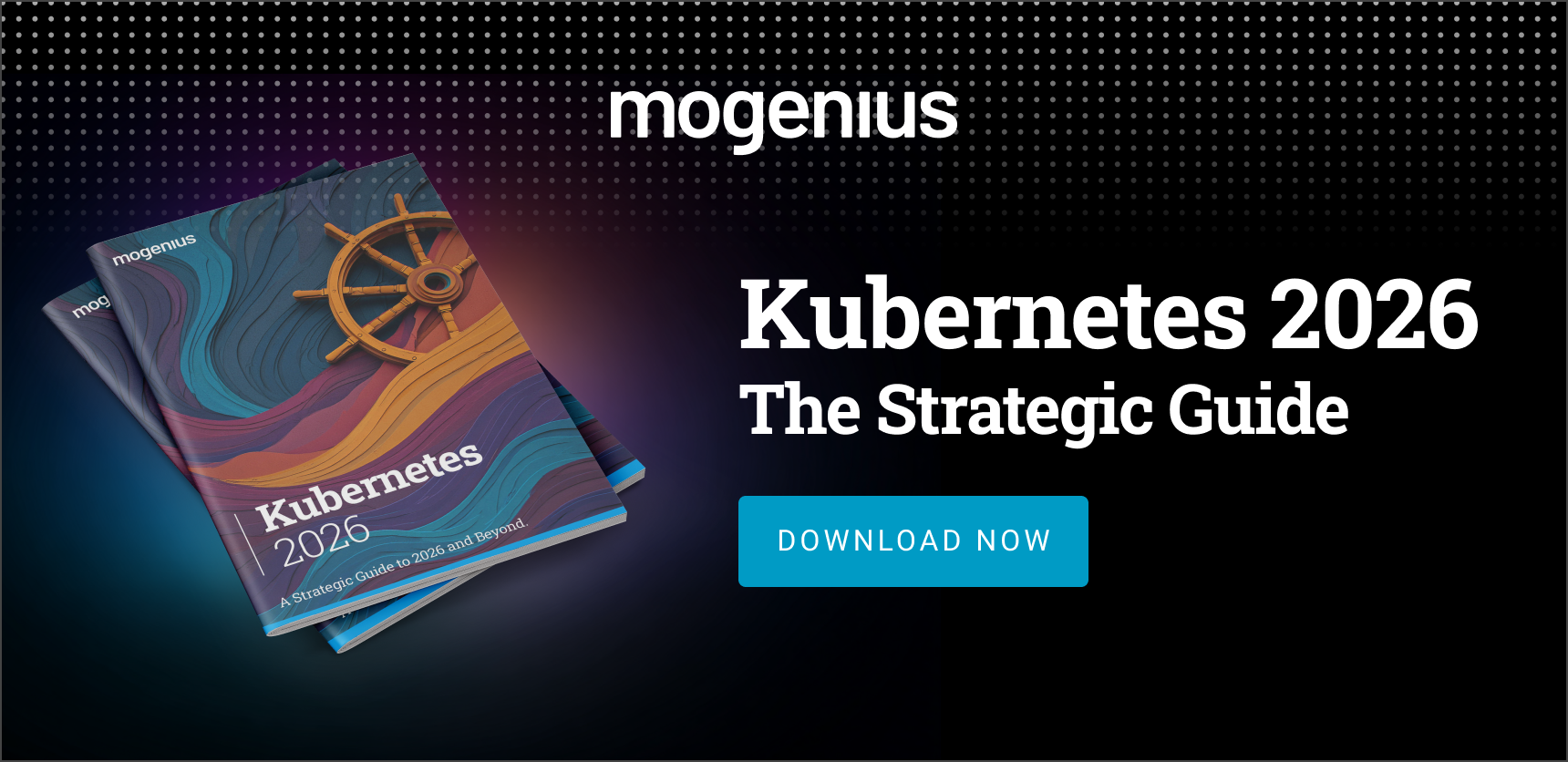
Navigating Edge Kubernetes and Fleet Management: Challenges and Solutions in Providing Access and Visibility to Kubernetes Pods

Managing a distributed fleet of Kubernetes clusters (which may contain hundreds of K3s nodes) across edge environments can be challenging and operationally complex. At scale, teams often wrestle with inconsistent access, limited automation, and fragmented tooling, while developers struggle with limited visibility into their pods and resources. This lack of direct visibility makes troubleshooting, monitoring, and maintaining application performance far more difficult, slowing down onboarding, blocking incident resolution, and creating unnecessary friction between platform teams and developers.
This guide explores the scalability crisis in edge Kubernetes and introduces mogenius as a unified solution designed to simplify both cluster operations and developer access. From GitOps-driven fleet management to real-time debugging dashboards, mogenius helps teams regain control at scale, without sacrificing security or speed.
The Scalability Crisis in Edge Kubernetes Management
Managing Kubernetes at the edge introduces two core challenges: operational complexity and lack of developer visibility.
The Operational Complexity of Edge Kubernetes Fleets
Enterprises deploying edge clusters in physical locations—like retail branches, factories, or IoT gateways—often rely on lightweight Kubernetes distributions, such as K3s. These clusters typically run on resource-constrained hardware, such as Raspberry Pis, or NUCs and operate behind firewalls, NATs, or unreliable network links. Static IPs and inbound access (e.g., via SSH or VPN) in edge clusters face significant challenges because provisioning static IPs across hundreds of distributed nodes is costly, complex, and often unsupported by the underlying network infrastructure. This also makes traditional tooling brittle and extremely hard to scale across geographically distributed environments.
Many forward-thinking teams adopt GitOps workflows using tools like Helm or Rancher Fleet because GitOps provides a reliable and scalable approach to consistently managing distributed edge clusters. A common approach involves bundling updates as Helm charts in a Git repository, with edge clusters pulling updates through an agent. While this avoids the need for inbound connections, maintaining consistent configurations across hundreds of clusters is still error-prone. Over time, platform teams face configuration drift, long deployment pipelines, and operational fragility as environments diverge.
This operational complexity is a very real challenge actively faced by platform teams overseeing hundreds of clusters in production environments today. Reports within the broader Kubernetes community reveal that 75 percent of Kubernetes practitioners experience operational issues related to multicluster management, scalability, and automation complexity. As the Cloud Native Computing Foundation (CNCF) highlights, Kubernetes was designed to handle the demands of large-scale, distributed systems through automation and orchestration, but this power comes with inherent complexity. The steep learning curve, coupled with a rapidly evolving tooling ecosystem, continues to make it difficult for developers to navigate day-to-day operations effectively.
Developer-Visibility Gap
Many teams begin with homegrown scripts, GitHub templates, the default Kubernetes dashboard, or tools like K9s to manage edge clusters. While these tools may work in the early stages, they often lack multicluster context, robust RBAC, or user-friendly interfaces. Over time, debugging becomes fragmented across CLIs, dashboards, and tribal knowledge. This effect gets much worse as developer head count grows. While operators juggle infrastructure scale, developers are left struggling for advanced visibility. Most access workflows rely on static kubeconfig files, CLI tools like kubectx or K9s, and manual RBAC policies.
This process doesn't scale across environments for several reasons: Static credentials become hard to manage, RBAC policies drift over time and are difficult to audit, and local tools provide no centralized visibility or access control. Developers are left struggling with inconsistent experiences, while operators face growing complexity and security risks. Over time, this setup leads to overpermissioned access, delayed troubleshooting, and increased chances of misconfiguration, all of which ultimately slow down the entire team.
In response, teams layer in monitoring stacks like Prometheus and Grafana to provide cluster metrics. But these tools often stop short of answering the question every developer eventually asks: "Why isn't my pod starting?"
Pod startup can fail or be delayed for numerous complex reasons that basic metrics dashboards alone do not directly reveal or correlate effectively. Some examples include YAML configuration errors, missing computational resources, container image pull failures, network connectivity issues, or insufficient permissions. To troubleshoot these issues, developers have to switch between multiple disparate dashboards, dig through verbose kubectl logs, interpret cryptic Kubernetes events, and manually correlate charts across different systems. They also often don't have direct access to the actual cluster where their workloads are running. So, system administrators are frequently pulled in to help with debugging, defeating the original goal of developer self-service capabilities.
Without a unified interface or properly scoped access model, development teams are forced to choose between developer productivity and operational security. And in most real-world cases, both critical aspects suffer significantly.
The Solution: mogenius Combines Centralized Control with Secure Access
mogenius provides a full-stack Kubernetes management platform to address both operational scale and developer experience in edge and multicluster Kubernetes environments. By combining centralized cluster control for platform operators with secure, scoped access tailored to developers, mogenius eliminates the need for direct cluster access, reduces operational overhead, and accelerates onboarding.
Cluster Management
At the heart of mogenius is a lightweight operator that enables seamless Kubernetes cluster registration with a central control plane, supporting Kubernetes distributions, such as K3s, and any CNCF-compliant cluster. Installation is simple — a one-liner command suffices — enabling teams to register new clusters in under five minutes. This rapid onboarding is crucial for managing infrastructure at scale.
From there, teams can use GitOps-based deployments to manage services. mogenius synchronizes with a Git repository and applies Helm charts or raw manifests to each cluster. This ensures that cluster workloads are always aligned with the source of truth in Git. Beyond GitOps, CI/CD pipelines and UI-based deployments are supported, enabling flexible developer workflows. Importantly, no inbound cluster connectivity, VPNs, or direct kubeconfig sharing are needed, removing traditional security risks around cluster access.
For observability, mogenius includes an integrated stack based on OpenTelemetry and Prometheus. Logs, metrics, and Kubernetes events are streamed from each cluster, giving operators real-time visibility into workloads with detailed topology maps showing service-to-service dependencies, Kubernetes resource-usage charts with drill-down capability, and built-in alerts, all available without additional setup.
Developer Access
mogenius focuses heavily on the developer experience. Instead of issuing kubeconfigs, teams create workspaces, which are isolated environments mapped to Kubernetes namespaces, each with its own RBAC and resource limits.
Developers log in via SSO or email/password and are automatically scoped to their assigned workspaces. No CLI tools or desktop apps are required. Everything happens in the mogenius web UI (available both as SaaS and on-prem).
Within the workspace, developers can:
- view live logs, events, and performance metrics (see "workspace dashboard");
- access topology maps that visualize service dependencies (see the resources page);
- drill into pods and see container restarts, PVC errors, and resource usage (see "service status and errors");
- search logs and correlate events with Helm releases; and
- deploy via Git pushes, templates, or the integrated CI/CD pipeline (see "integrations").
This unified view drastically shortens the time required to detect and remediate issues by giving developers exactly the scope and tooling they need—without full cluster privileges or context-switching across multiple tools.
Key Benefits of the mogenius Approach
mogenius is designed to support both enterprise fleet operations and day-to-day developer work, with the following key benefits:
- 10x faster onboarding: Using mogenius, onboarding—from connecting a Kubernetes cluster to configuring the developer workspace and deploying the first application—takes only minutes. Developers can quickly get started without needing deep knowledge of kubeconfig files or YAML configurations because the platform abstracts and automates those initial setup steps for them.
- Unified UI: Logs, metrics, deployments, events, and topology are all accessible in one browser-based interface. There is no need to switch between tools like Lens, Grafana, and kubectl.
- Fine-grained access control: Workspaces enforce least-privilege access. Devs see only their workloads, while operators retain full cluster control.
- Scalable to hundreds of clusters: GitOps workflows and templated configurations ensure consistent deployments at scale.
- Extensible by design: An Operator API and SDK are on the roadmap, allowing deeper integration with existing platforms.
- Out-of-the-box security and templates: mogenius includes templates for CI/CD pipelines, workloads, secrets, network policies, and more. This minimizes YAML boilerplate and improves governance.
Platform teams see fewer developer-support requests after adopting unified visibility solutions like mogenius, which bridges cluster operations and developer needs for scaling Kubernetes environments.
How to Implement with mogenius (Step-by-Step)
Whether you are managing a single edge cluster or scaling operations to hundreds of clusters, getting started with mogenius is quick and straightforward, minimizing the complexity often associated with Kubernetes management at scale. This section walks through the exact steps to connect clusters, set up GitOps workflows, configure developer access, and start debugging.
Connecting a Cluster
To begin using mogenius, you first need to connect your Kubernetes cluster to the platform. This is done via the Clusters section in the mogenius console, where you copy an install command specific to your cluster environment. Running this command installs the mogenius operator on your Kubernetes cluster. This operator installation typically takes under five minutes to complete and automatically registers the cluster. This onboarding approach helps you avoid the traditional complexities of manual cluster registration, and the cluster immediately gains full integration for management, deployment, and monitoring capabilities.
Deploying Services
Once your cluster is connected, deploying applications or services becomes straightforward. The recommended approach is to organize your Kubernetes manifests or Helm charts within a Git repository. This setup enables mogenius to utilize GitOps principles, where it continuously syncs the desired state from your Git repo to your connected clusters. The platform will then roll out updates, ensuring consistent application deployment across multiple clusters if you have a multicluster environment. This workflow not only provides version-controlled deployments but also supports multicluster rollout strategies where identical application configurations can be propagated seamlessly across numerous clusters. This is a powerful capability for platform engineers managing distributed or edge environments, combining the benefits of reproducibility with operational reliability.
Creating Workspaces
Workspaces in mogenius serve as logical boundaries for organizing resources by team or project. When you create a workspace, you can define namespaces within your cluster along with fine-grained role-based access control (RBAC) policies, ensuring users and teams can only access resources they are authorized to manage. Alongside access controls, resource quotas—such as CPU, memory, and storage limits—can be applied at the workspace level, preventing noisy neighbors and resource exhaustion. Furthermore, security-sensitive configurations—such as network policies and templates for managing secrets—can be centrally defined and enforced within workspaces, helping maintain governance and compliance without sacrificing developer agility.
Inviting Developers
Collaboration within mogenius is designed to be seamless and secure. Developers and other team members can be invited to your mogenius environment via email or through integration with identity providers supporting single sign-on (SSO) or OpenID Connect (OIDC). This allows for simplified onboarding using familiar authentication systems already in place within your organization. Once invited and authenticated, developers gain immediate access to their assigned workspaces and resources, with visibility and permissions scoped precisely according to their roles. This granular access model ensures that developers have the tools needed to deploy, monitor, and manage their workloads.
Debugging Workloads
Troubleshooting is a core operational activity facilitated by mogenius's UI, which offers centralized visibility into logs, events, metrics, and workload topology maps. This comprehensive monitoring helps quickly identify issues such as container crashes, persistent volume claim (PVC) problems, and failed deployments, all within the context. By consolidating these views, the platform speeds up problem diagnosis and remediation, which is critical for maintaining high availability and reliability in production environments.
Bootstrapping New Clusters (Optional)
For teams managing edge locations or remote sites, mogenius supports bootstrapping new Kubernetes clusters using tools like Cluster API or lightweight installers such as k3sup to provision K3s clusters. After provisioning, these clusters can be onboarded to the mogenius fleet by running the install script for the mogenius operator. This capability allows consistent cluster lifecycle management across geographically distributed environments, which is particularly valuable for platform engineers tasked with scalable infrastructure automation and fleet management.
Conclusion
Scaling Kubernetes at the edge doesn't have to mean sacrificing visibility or security. With mogenius, platform teams gain centralized control over hundreds of clusters, while developers get the self-service experience they need to ship and debug effectively.
From zero-touch onboarding to secure, scoped access, mogenius abstracts complexity and enables teams to focus on what matters: delivering reliable applications at scale.
Curious about how mogenius could simplify your Kubernetes operations and give developers the visibility they need, even across hundreds of clusters? Request a demo and see it in action.

FAQ
What is edge computing in the context of Kubernetes?
Edge computing refers to running compute workloads closer to the source of data, such as retail stores, factory floors, or IoT gateways — rather than in centralized cloud data centers. Kubernetes at the edge typically involves lightweight distributions like K3s running on constrained hardware at remote locations.
What does fleet management mean in Kubernetes?
Fleet management involves coordinating a large number of Kubernetes clusters from a central control plane. This includes provisioning, updating, monitoring, and enforcing policies uniformly. Tools like GitOps and Helm are commonly used to maintain consistency across fleets.
Why is managing access to edge clusters hard?
Edge clusters often lack public IPs or VPNs, making inbound access (*eg* SSH or kubectl) infeasible. This prevents operators from logging in directly or developers from debugging workloads. Secure access must instead be built using outbound agents and scoped UIs, an approach platforms like mogenius use to enable seamless and secure connectivity.
Interesting Reads
The latest on DevOps and Platform
Engineering trends
Subscribe to our newsletter and stay on top of the latest developments




